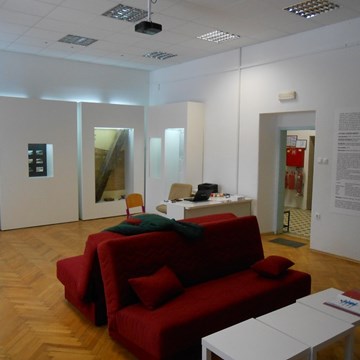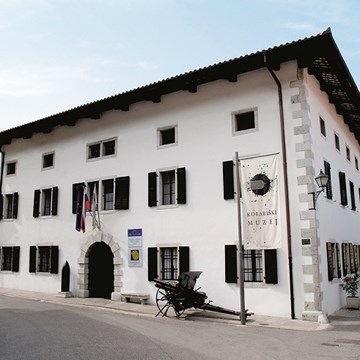The Knave Of Diamonds
The early 20th century in Russia was a period of memorable events in the country’s cultural life. One of the most important artistic phenomenon of this era was the Knave of Diamonds group. At the beginning, it was comprised of artists whose work combined a love for European post-impressionism and Russian folk art. The name, conceived by Mikhail Larionov, has been interpreted indifferent ways over time: a liar, a thief, a cheat. But in its meaning lay the group’s outspoken opposition to the then-prevailing symbolist movement. The names of their exhibitions – Wreath, Blue Rose, and others – recall salon painting, which was rallied against by the youthful artists united around the Knave of Diamonds.
Mikhail Larionov, Natalia Goncharova, Ilya Mashkov, Pyotr Konchalovsky, Aristarkh Lentulov and Robert Falk participated in the first exhibition, which opened 10th December 1910. The exhibition’s jarring qualities left a strong impression on their contemporaries. Its signature piece was Self-Portrait and Portrait of Pyotr Konchalovsky by Ilya Mashkov. Both artists were depicted on the canvas nearly nude, like athletes in their underwear. Their poses and appearance are consistent with photographs of wrestlers and boxers, or popular films of that time. Books with the names of their favourite artists (Cézanne, Matisse), a piano, a violin and sheet music serve as indicators that the painting’s subjects are educated.
Trays like the ones sold at fairs show their interest in folk art. In this work, Ilya Mashkov expressed the Knave of Diamonds’ artistic principles. The simplification of artistic language and its jarring nature, along with the use of motifs borrowed from everyday life are some of the main tenets of this group. Based on these and employing figurative forms, members brought freshness and innovation to various genres.
The portraits, landscapes, and still lifes by Mashkov, Konchalovsky, Larionov and other Knave of Diamonds artists stand out for their sharpness and the originality of the subjects depicted. During the near decade-long history of their exhibitions, the composition of the Knave of Diamonds’ membership changed. In 1911, Mikhail Larionov – who was behind their outrageous name – left the group, together with Natalia Goncharova. They did not like the profound influence of Cézanne on the paintings produced by its core members. Despite such conflicts, between 1910 and 1917 practically all of Russia’s avant-garde artists – Kazimir Malevich, Vladimir Tatlin, Alexandra Exter, Olga Rozanova, Marc Chagall and others – exhibited their work at Knave of Diamonds shows. The group’s tolerant attitude toward the radicalism of these young artists is a unique quality both of the Jack of Diamonds itself and the exhibitions organized in its name.
Exhibitions and events
We don't have anything to show you here.
Activities from this museum
We don't have anything to show you here.










